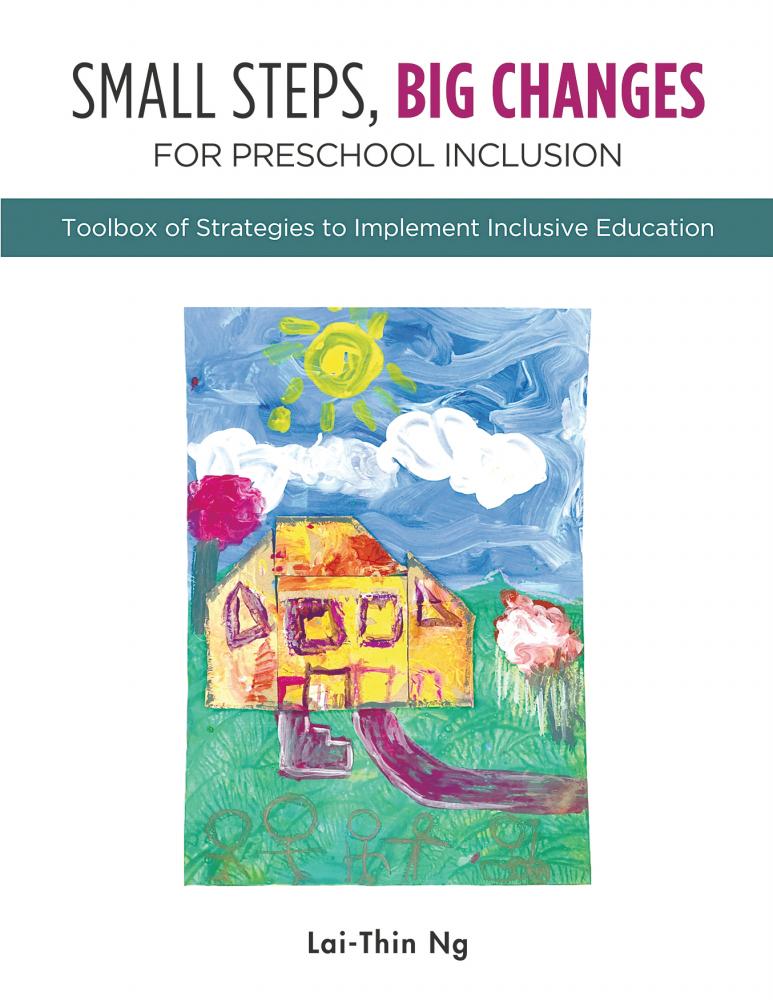WE are excited to announce the publication of a groundbreaking new resource by Lai-Thin Ng titled Small Steps, Big Changes for Preschool Inclusion.
This invaluable resource is a must-have for preschool teachers, administrators, and parents who are committed to creating inclusive and equitable learning environments.
Small Steps, Big Changes for Preschool Inclusion is written specifically with the Malaysian context in mind by a Malaysian author to address the unique challenges and opportunities for inclusive education in the country.
As far as we are aware, this is the first of its kind in Malaysia.
Lai-Thin’s personal insights and professional knowledge culminated in this comprehensive resource.
She is a sibling of a neurodivergent young adult and holds a master’s degree in special and inclusive education and a bachelor’s degree in psychology.
ALSO READ: Budget 2025 caters to all student segments - Fadhlina
As the project lead for the National Early Childhood Intervention Council (NECIC), she developed an inclusive education course for preschool teachers.
In Malaysia, many children with disabilities and developmental delays continue to face barriers in accessing preschool education in mainstream settings.
This book goes beyond just placing children with disabilities in mainstream settings.
Packed with practical tools and strategies, the book invites educators, parents and related professionals to reimagine and transform how we create environments where every child – whether with or without disabilities – not only learns but thrives.
Usable with any existing curriculum, it provides teachers with practical suggestions to ensure children with disabilities are meaningfully engaged and receive the support they need to succeed alongside their peers.
ALSO READ: Promoting awareness and acceptance of autism
We are also challenged to stop focusing on just teaching the ‘average student’ and to use Universal Design for Learning to reach and enable all students, disabled or otherwise, to progress on their lifelong journey of learning.
As Lai-Thin says: “Universal Design for Learning builds flexibility and inclusivity into the learning environment and enables us to meet the diverse and variable needs and strengths of every student.”
Teachers and parents will learn how to:
Support meaningful learning and participation: A strength-based approach to help children with disabilities reach their full potential;
Implement adaptations and accommodations: Strategies to ensure that all children can participate in learning activities;
Modify lessons and curriculum: Tailoring educational content to meet the diverse needs and learning paces of all students;
Address challenging behaviours: A compassionate approach based on neuroscience to help children with disabilities manage their emotions and behaviours;
Facilitate positive social interactions: Fostering inclusive and supportive peer relationships;
Foster effective collaboration: Building strong partnerships within the preschool community and beyond; and,
Prepare for transition: Supporting children, families, and preschools as they prepare for the transition to school.
The section on behaviour takes us to a new paradigm in how to help children.
It moves away from the conventional ideas of punishment and rewards and moves to a relationship with a child, an understanding of the dynamics of the behaviour and providing children with an environment in which they can thrive.
The cover page graphic (pix) was painted by Branden Lim who has spinal muscular atrophy and is a wheelchair user.
It speaks about his desire to go to school, just like any child, and wishes this for all children regardless of any disability.
Although this book centres on children with disabilities it is a book that should be put in the hands of every teacher, every parent and every educator of all children because it offers guidance on how we can support children whether they have or do not have a disability.
ALSO READ: The crying need for art, music and sport
At the heart, Lai-Thin is speaking about relationships.
Teachers with students, students with teachers, students with students, and parents with teachers and students.
It is only when we have respectful and understanding relationships, which value the inherent worth in each other, that can we have a learning environment that supports all children.
There is no “one-size-fits-all solution” for children with diverse disabilities and Lai-Thin provides valuable insights and practical guidance for educators seeking to create more inclusive and equitable learning environments.
ALSO READ: Symbiosis of teaching and learning
The book emphasises the importance of unlearning harmful stereotypes and biases, listening to the lived experiences of individuals with disabilities, and taking small, incremental steps towards a more inclusive future.
We hope, as Lai-Thin does, that this book will inspire and empower educators to make a positive difference in the lives of children and begin to explore various creative and meaningful ways to support not just the children with disabilities, but also other persons with disabilities as autonomous and empowered members of the society.
Datuk Dr Amar-Singh HSS is a consultant paediatrician and adviser. Wong Hui-Min is an early intervention childhood practitioner and president of the National Early Childhood Intervention Council.
Comments: letters@thesundaily.com









